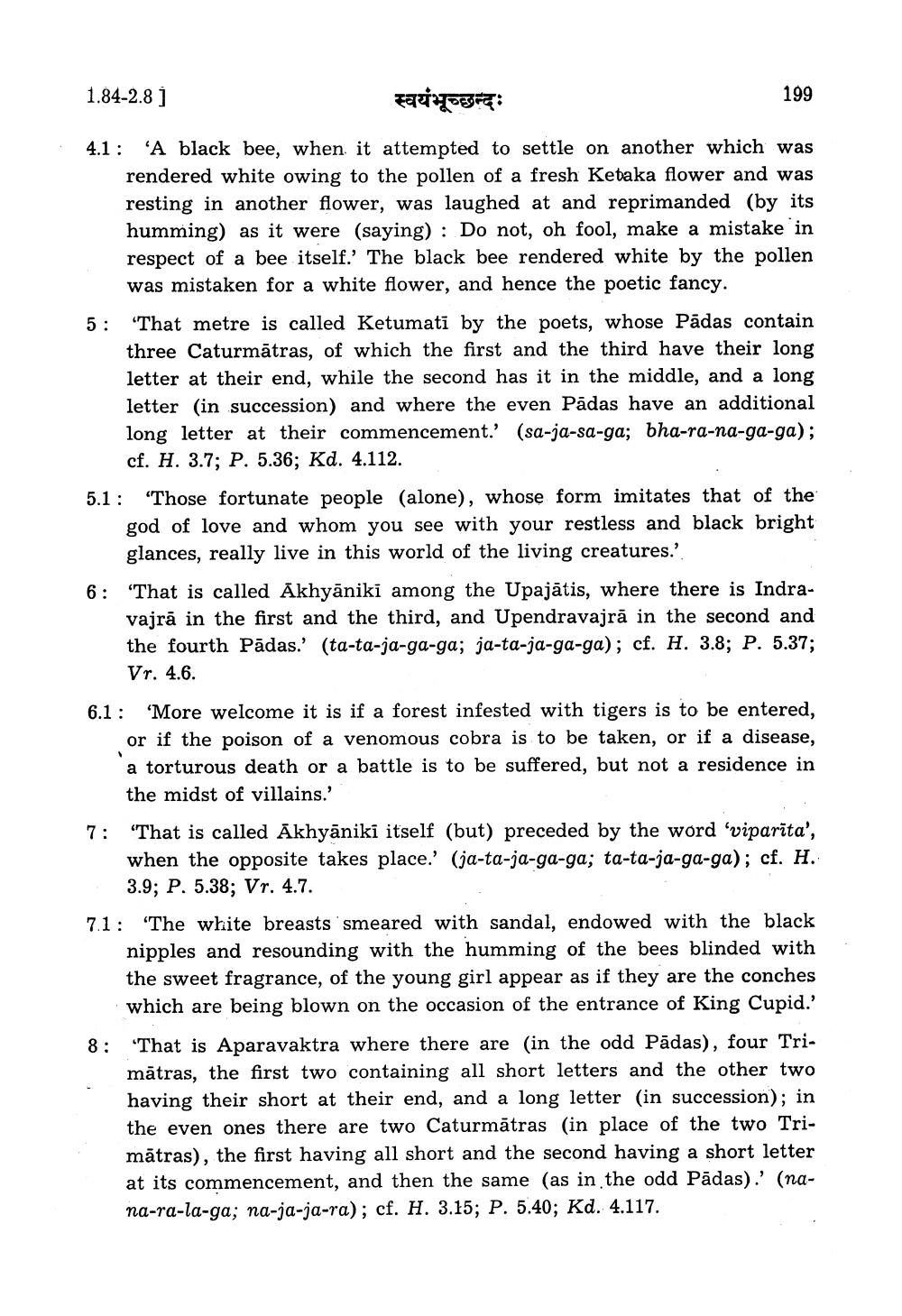________________
1.84-2.8)
स्वयंभूच्छन्दः
199
4.1: A black bee, when it attempted to settle on another which was
rendered white owing to the pollen of a fresh Ketaka flower and was resting in another flower, was laughed at and reprimanded (by its humming) as it were (saying) : Do not, oh fool, make a mistake in respect of a bee itself.' The black bee rendered white by the pollen
was mistaken for a white flower, and hence the poetic fancy. 5: "That metre is called Ketumati by the poets, whose Pādas contain
three Caturmätras, of which the first and the third have their long letter at their end, while the second has it in the middle, and a long letter (in succession) and where the even Padas have an additional long letter at their commencement.' (sa-ja-sa-ga; bha-ra-na-ga-ga);
cf. H. 3.7; P. 5.36; Kd. 4.112. 5.1: "Those fortunate people (alone), whose form imitates that of the
god of love and whom you see with your restless and black bright glances, really live in this world of the living creatures.'.
6: "That is called Akhyāniki among the Upajātis, where there is Indra
vajrā in the first and the third, and Upendravajrā in the second and the fourth Pādas.' (ta-ta-ja-ga-ga; ja-ta-ja-ga-ga); cf. H. 3.8; P. 5.37; Vr. 4.6.
6.1: ‘More welcome it is if a forest infested with tigers is to be entered,
or if the poison of a venomous cobra is to be taken, or if a disease, a torturous death or a battle is to be suffered, but not a residence in
the midst of villains.' 7: "That is called Akhyāniki itself (but) preceded by the word 'viparita',
when the opposite takes place.' (ja-ta-ja-ga-ga; ta-ta-ja-ga-ga); cf. H.
3.9; P. 5.38; Vr. 4.7. 71: "The white breasts smeared with sandal, endowed with the black
nipples and resounding with the humming of the bees blinded with the sweet fragrance, of the young girl appear as if they are the conches which are being blown on the occasion of the entrance of King Cupid.'
8:
That is Aparavaktra where there are in the odd Pädas), four Trimātras, the first two containing all short letters and the other two having their short at their end, and a long letter (in succession); in the even ones there are two Caturmätras in place of the two Trimātras), the first having all short and the second having a short letter at its commencement, and then the same (as in the odd Pädas).' (nana-ra-la-ga; na-ja-ja-ra); cf. H. 3.15; P. 5.40; Kd. 4.117.




